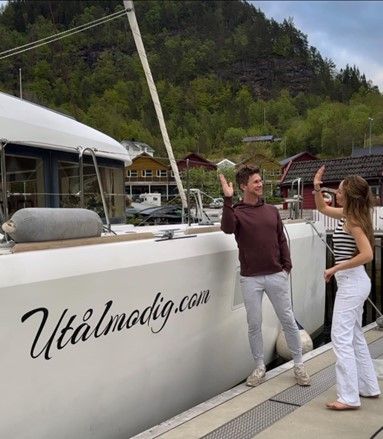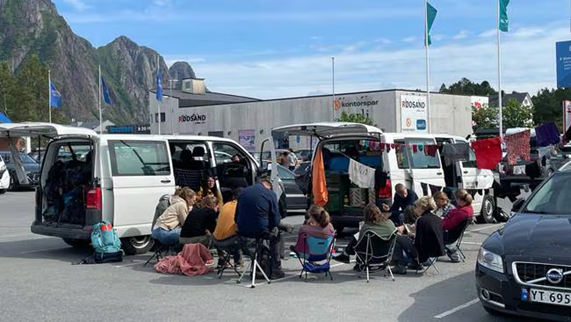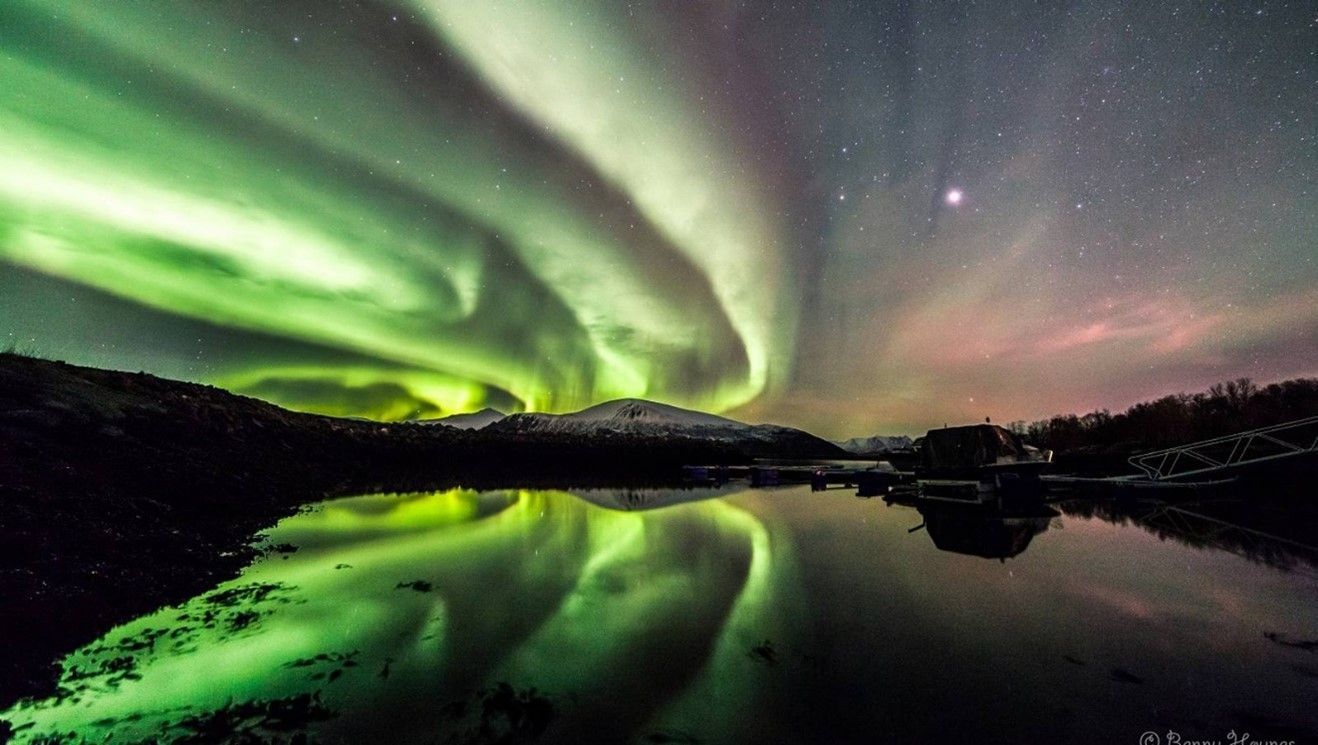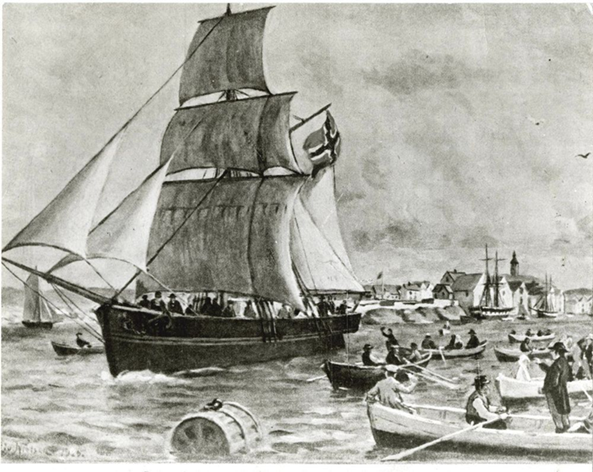


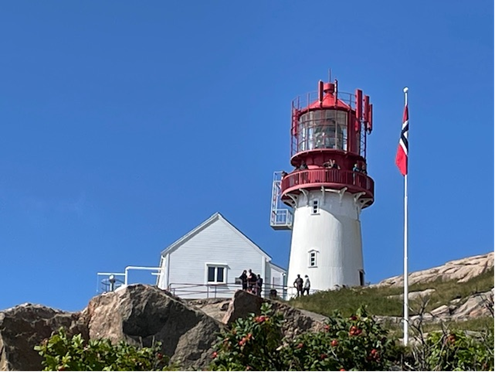
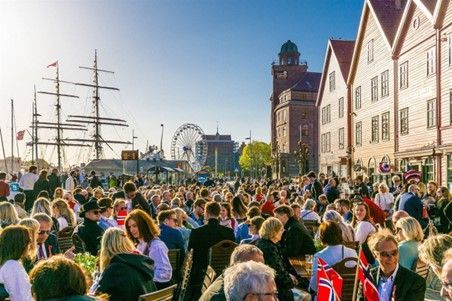
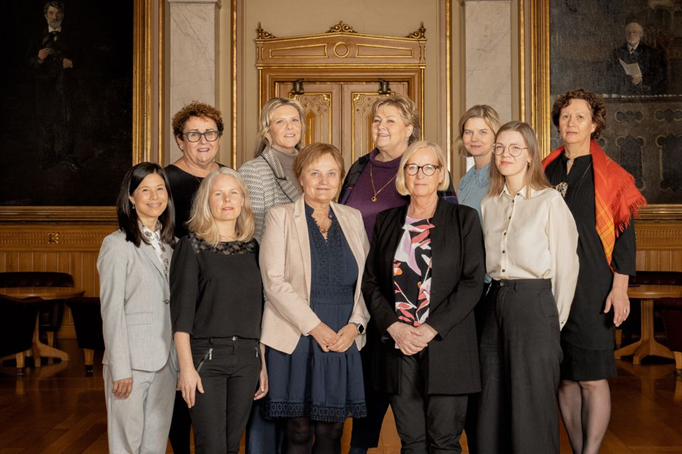

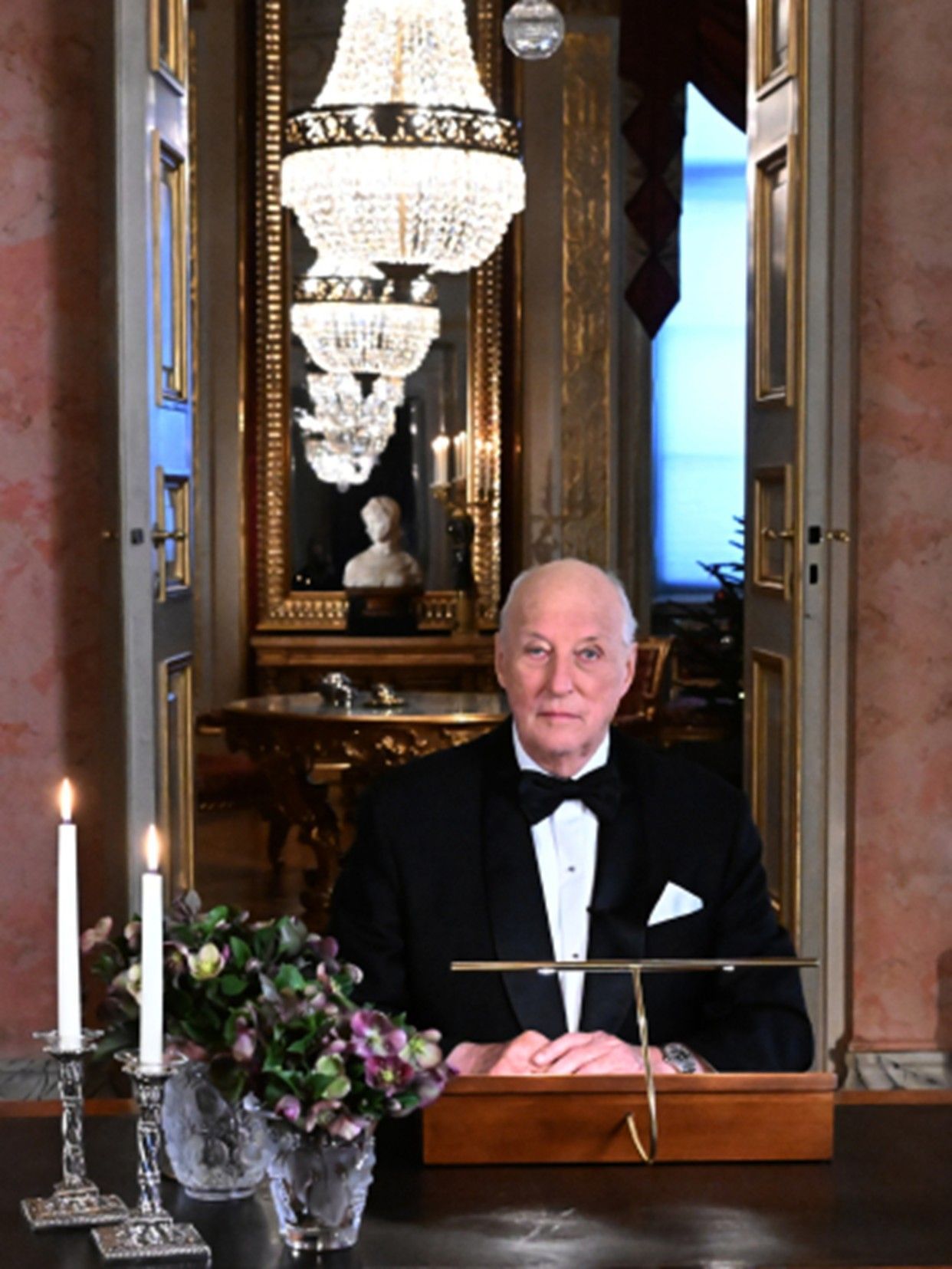

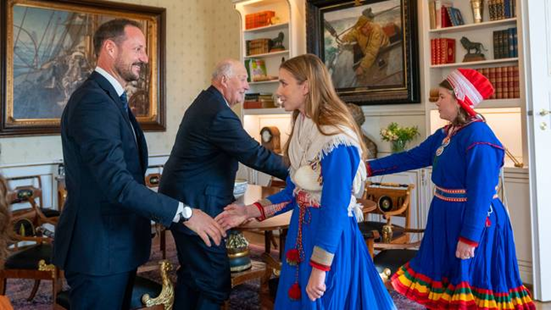
Traveling to Norway for the summer in mid-June always connects us with Americans traveling to Norway, at the airport and on board the plane. I use the opportunity to ask where they are going, why they selected Scandinavia and their possible previous experiences. Scandinavian Airlines and Iceland Air benefit from land vacationers and cruise passengers during the summer which compensates for the lack of business travelers not traveling as much as other times of the year.
The newly opened Vitenmuseum (Jøssingfjord Science Museum) at the end of the fjord
Photo: Lasse
In the middle of a car park, the tourists have decided to hang clothes to dry.
Photo: BJØRGE KRISTOFFERSEN
Northern Light in the sky over Holmen, Sortland in Lofoten.
Photo: BENNY HØYNES
Today, I am happy to introduce you to a new word, “Coolcation” -- the meaning of which is a holiday in a place where the weather is not terribly warm, usually because people do not want to go somewhere that has become too hot due to climate change. For most people, and especially for Scandinavians, summer holidays used to be about following the sun, seeking the heat. With the intense, record-breaking temperatures of recent years, however, many are considering travelling in the opposite direction: booking “coolcations” in more temperate destinations like Norway, Sweden, Finland, Denmark, and even Alaska in the US, which sites also might have the benefit of being less crowded. An increasing number of travelers are seeking refuge in cooler climates, swapping beach towels for cozy sweaters. Whether it’s the majestic landscapes of Norway, the snowy peaks of the Swiss Alps, the rugged beauty of the Canadian Rockies or the remote wilderness of Alaska, “coolcations” are quickly becoming a favorite way to escape the summer heat.
Recently, Vigdis and I traveled to Norway in the middle of June together with a nice couple from Phoenix, Arizona. They told us that when they left home it was 110 degrees Fahrenheit, so they were going to Bergen to join a Viking cruise ship enroute to the British Islands for 14 days. We had a nice chat about their first destination being Oslo where they would board a train taking them over the mountains to Bergen. Their choice of vacation is becoming more and more common for Americans. According to top travel experts like Conde Nast, “coolcationing” is one of the hottest (or coolest) travel trends this year. Today more than 50% of tourists choose their destination because of the climate and weather.
“We expect all time high numbers” (when it comes to international tourism) this summer, says Merete Habberstad, Director of Communication at NHO (a Norwegian Employers’ organization with more than 30,000 members.) in an interview with the tabloid newspaper VG. Her organization just conducted a survey among member organizations within the travel industry, which indicated that 24 % of the member organizations expect an increase in international tourists compared to last year. In interviews with travelers in Bergen, most of them complained about extreme heat in their homeland. Researchers expect the heat to be at least at the same level this year in the south of Europe and the Americas. Another finding from the tourists is that they would like to stay longer when visiting Norway. People from Italy, France and Spain represent the increase from southern Europe, but we also see many Americans rerouting their destinations to Scandinavia. In Norway, Bergen, Oslo, Lofoten and Tromsø in the north are among the most popular destinations. The numbers show that June, July, and August have increased from last year. Already in early June an increased number of international tourists were observed on the streets of Bergen.
So far, the volume of tourism is under control and does not represent a huge challenge, however it’s time to prepare for increased visitors and plan for year around tourism. An increased number of people requires changes in organizing the flow of tourists, and experts are trying to spread the increase to various locations as well as spacing it throughout the year. In the survey by NHO Travel, they also found that five out of six Norwegians plan to vacation in Norway this year, so it’s important to make it a positive experience for the local residents as well as for the tourists. Studies show that Norwegians are more concerned with quality time. Younger people are most interested in being physically active, trying something exciting and new, experiencing an adrenaline rush. Visitors under thirty-five are more likely to try Via Ferrata (a climbing route in the mountains that employs fixed steel cables, rungs, or ladders to which climbers secure themselves to limit any fall) and canyoning, a sport that combines several outdoor sports. A canyoneer uses techniques such as hiking, climbing, rappelling, swimming, and sometimes sliding down natural water slides.
The best time to witness the phenomenon of the midnight sun in Norway is during the summer months. From late May to mid-July, the Arctic Circle (and regions above it) experiences 24 hours of daylight, creating the perfect conditions to embrace the magic of the perpetual sun. Extended daylight hours allow ample time to explore, engage in outdoor activities, and immerse yourself in the uniqueness of the midnight sun. Your best chance of witnessing the Northern Lights, however, comes if you travel between the months of November and March – although you can also see them as early as September if you go to the far north – and somewhere rural and as remote as possible, away from any lighted areas.
Visit Norway, (www.visitnorway.com), which calls itself “the official travel guide to Norway,” interviews domestic and international tourists every year. In their surveys, they get answers as to what motivates visitors to travel to Norway, what the visitors do during travel in Norway, how many days and nights they stay and their level of satisfaction. Experiencing nature is a must, and fjords and mountains top the list. Most foreign visitors are looking for peace and quiet, but this does not mean sitting still. They enjoy countless activities with various forms of walking and hiking as the most popular outdoor activities, closely followed by nature “experiences” such as found in the fjords, mountains and wilderness.
Interest in culture, art and history increases with age. Tourists over the age of sixty-five are most interested in cultural experiences during their holidays, especially experiences linked to history and cultural heritage. What captivates visitors across generations is an interest in experiencing the local culture, food and lifestyle by visiting authentic restaurants and trying new dishes. Americans, Australians and Brits generally fit this category, while it is less important for guests from neighboring countries and the Baltics. Getting to know the places better is the most important motive for cultural experiences across all markets and most important for a large majority of guests from Southern Europe and the USA.
Foreign travelers who are satisfied with the attractions and sights they have visited are more willing to recommend Norway as a destination to others. Exciting and interesting attractions and sights are the most important driver for increasing satisfaction and willingness to recommend, followed by welcoming local people. Visitors to Norway are most satisfied with the accommodations and the hospitality and service they experienced here, according to the Visit Norway surveys. They were less satisfied with the weather, food and local products. In general, women are more satisfied than men, and the oldest are more satisfied than the youngest.
Satisfaction is highest from the USA and other countries outside Europe, and there is an increase in satisfaction among tourists from the USA, Great Britain, Austria and Switzerland, compared to 2019.
A full 16 percent of foreign tourists answered that "good food in restaurants and eateries" was not relevant on their trip in Norway with 30 percent of German tourists and 24 percent of Dutch tourists answered "not relevant" to whether they were satisfied with food in restaurants and eateries. The guests from these markets also spend the least money of all markets and travel largely in motorhomes.
While some visitors come for vacation, they end up turning it into a move north to find a new quality of life, especially young people attracted by the fresh air and amazing nature. These new residents are not only Norwegians but increased people from central Europe. It’s not unusual to meet couples from the Netherlands, Germany and France in small towns and rural areas in the north of Norway.
I wish you all a great summer and sweet dreams about a cooler place.

